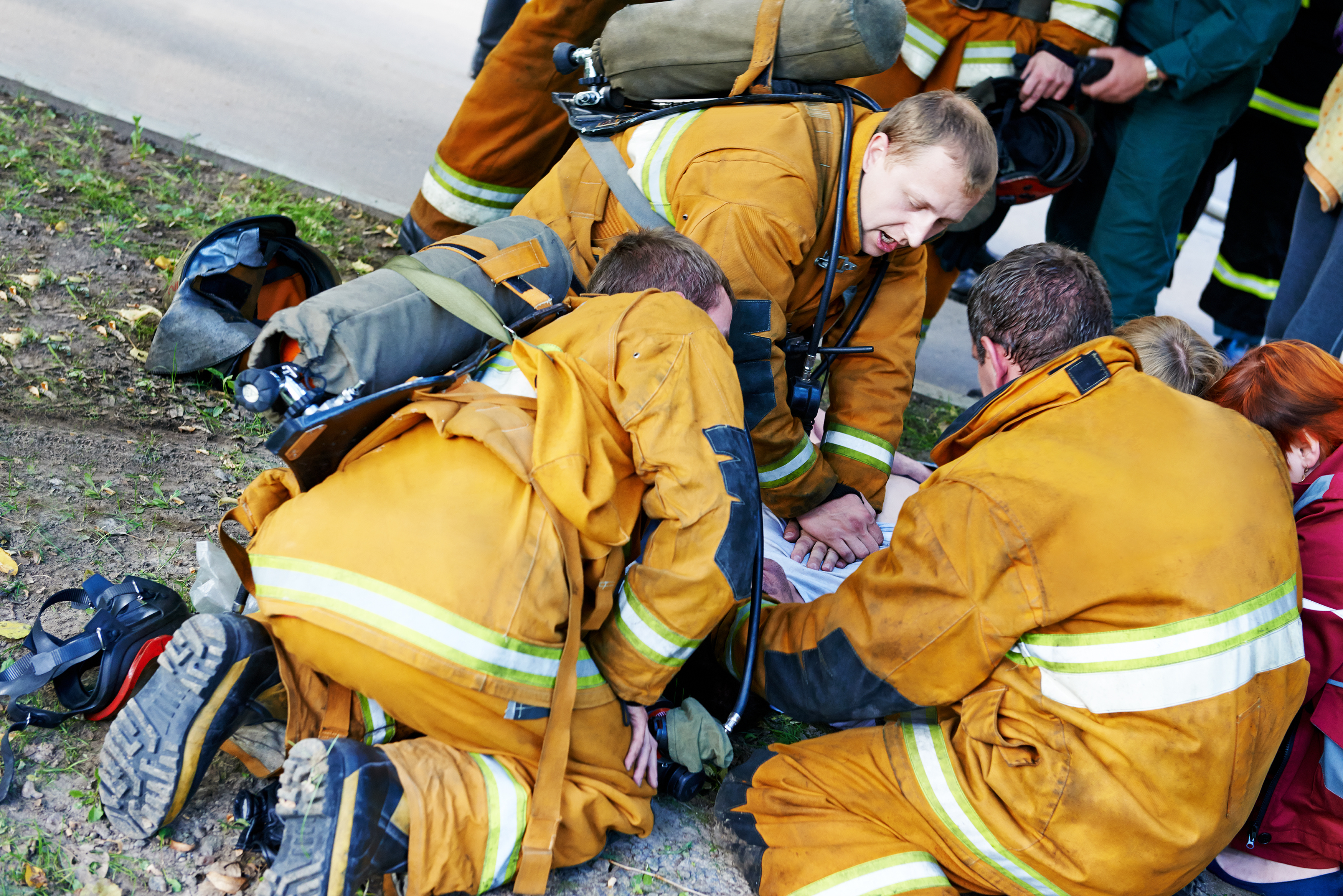Trauma characteristics
Exposure to trauma is required for a diagnosis of PTSD. Traumas include illness, accidents, war and terrorism, pandemics, disasters, and violence and abuse, among others. Risk of PTSD can be influenced by trauma characteristics such as trauma severity and frequency, whether the trauma is experienced directly or indirectly, whether it was intentional or non-intentional, and whether it was interpersonal. To access the evidence on trauma and personal characteristics associated with risk for PTSD, click on the tabs below or navigate through the topics via the drop-down menu on the left.
Image: ©bsd555 – stock.adobe.com

Abuse and violence
Are abuse and violence risk factors for PTSD? Exposure to at least one trauma is required for a diagnosis of PTSD. The latest version of the Diagnostic and Statistical Manual of Mental Disorders (DSM-5) determines direct traumas as threatened death, actual or threatened serious injury, or actual or threatened sexual violence. Indirect traumas include witnessing the trauma, or learning that a relative or close friend was exposed to a trauma. Differences in trauma characteristics, along with differences in personal characteristics, may affect the risk of developing PTSD. What is the evidence for abuse and violence and risk for PTSD? Moderate…

Bereavement
Can bereavement increase the risk of PTSD? Exposure to at least one trauma is required for a diagnosis of PTSD. Both direct and indirect exposure to trauma can increase the risk of PTSD. The Diagnostic and Statistical Manual of Mental Disorders (DSM-5) determines direct traumas as threatened death, actual or threatened serious injury, or actual or threatened sexual violence. Indirect traumas include witnessing the trauma, or learning that a relative or close friend was exposed to a trauma resulting in death. Differences in trauma characteristics, along with differences in personal characteristics, may affect the risk of developing PTSD. What is…

Direct vs. indirect exposure
Can direct and indirect exposure to trauma increase the risk of PTSD? Exposure to at least one trauma is required for a diagnosis of PTSD. Both direct and indirect exposure to trauma can increase the risk of PTSD. The latest version of the Diagnostic and Statistical Manual of Mental Disorders (DSM-5) determines direct traumas as threatened death, actual or threatened serious injury, or actual or threatened sexual violence. Indirect traumas include witnessing the trauma, or learning that a relative or close friend was exposed to a trauma. Differences in trauma characteristics, along with differences in personal characteristics, may affect the…

Disasters
How are disasters related to risk of PTSD? Exposure to at least one trauma is required for a diagnosis of PTSD. The latest version of the Diagnostic and Statistical Manual of Mental Disorders (DSM-5) determines direct traumas as threatened death, actual or threatened serious injury, or actual or threatened sexual violence. Indirect traumas include witnessing the trauma, or learning that a relative or close friend was exposed to a trauma. Differences in trauma characteristics, including the severity and type of exposure, can affect the risk of developing PTSD. Personal characteristics such as age and sex also influence risk. What is the evidence for PTSD in…

Epidemics and pandemics
How are epidemics and pandemics related to PTSD? Exposure to at least one trauma is required for a diagnosis of PTSD. The latest version of the Diagnostic and Statistical Manual of Mental Disorders (DSM-5) determines direct traumas as threatened death, actual or threatened serious injury, or actual or threatened sexual violence. Indirect traumas include witnessing the trauma, or learning that a relative or close friend was exposed to a trauma. Differences in trauma characteristics, including the severity and type of exposure, can affect the risk of developing PTSD. Personal characteristics such as age and sex also influence risk. What is the evidence regarding epidemics and…

Imprisonment
How is imprisonment related to risk of PTSD? Exposure to at least one trauma is required for a diagnosis of PTSD. The latest version of the Diagnostic and Statistical Manual of Mental Disorders (DSM-5) determines direct traumas as threatened death, actual or threatened serious injury, or actual or threatened sexual violence. Indirect traumas include witnessing the trauma, or learning that a relative or close friend was exposed to a trauma. Differences in trauma characteristics, including the severity and type of exposure, can affect the risk of developing PTSD. Personal characteristics such as age and sex also influence risk. What is the evidence for imprisonment and…

Intentional vs. unintentional traumas
How are intentional and unintentional traumas related to PTSD? Exposure to at least one trauma is required for a diagnosis of PTSD. The latest version of the Diagnostic and Statistical Manual of Mental Disorders (DSM-5) determines direct traumas as threatened death, actual or threatened serious injury, or actual or threatened sexual violence. Indirect traumas include witnessing the trauma, or learning that a relative or close friend was exposed to a trauma. Differences in trauma characteristics, including the severity and type of exposure, can affect the risk of developing PTSD. Personal characteristics such as age and sex also influence risk. Intentional traumas are those that involve…

Interpersonal vs. non-interpersonal traumas
How is interpersonal and non-interpersonal traumas related to PTSD? Exposure to at least one trauma is required for a diagnosis of PTSD. The latest version of the Diagnostic and Statistical Manual of Mental Disorders (DSM-5) determines direct traumas as threatened death, actual or threatened serious injury, or actual or threatened sexual violence. Indirect traumas include witnessing the trauma, or learning that a relative or close friend was exposed to a trauma. Differences in trauma characteristics, including the severity and type of exposure, can affect the risk of developing PTSD. Personal characteristics such as age and sex also influence risk. Interpersonal traumas are those that involve…

Migration and displacement
How are migration and displacement related to PTSD? Exposure to at least one trauma is required for a diagnosis of PTSD. The latest version of the Diagnostic and Statistical Manual of Mental Disorders (DSM-5) determines direct traumas as threatened death, actual or threatened serious injury, or actual or threatened sexual violence. Indirect traumas include witnessing the trauma, or learning that a relative or close friend was exposed to a trauma. Differences in trauma characteristics, including the severity and type of exposure, can affect the risk of developing PTSD. Personal characteristics such as age and sex also influence risk. What is the evidence for migration and…

Moral injury
How is moral injury related to PTSD? Exposure to at least one trauma is required for a diagnosis of PTSD. The latest version of the Diagnostic and Statistical Manual of Mental Disorders (DSM-5) determines direct traumas as threatened death, actual or threatened serious injury, or actual or threatened sexual violence. Indirect traumas include witnessing the trauma, or learning that a relative or close friend was exposed to a trauma. Differences in trauma characteristics, including the severity and type of exposure, can affect the risk of developing PTSD. Personal characteristics such as age and sex also influence risk. This summary table presents the evidence for PTSD…

Physical injury and illness
How is physical injury and illness related to PTSD? Exposure to at least one trauma is required for a diagnosis of PTSD. The latest version of the Diagnostic and Statistical Manual of Mental Disorders (DSM-5) determines direct traumas as threatened death, actual or threatened serious injury, or actual or threatened sexual violence. Indirect traumas include witnessing the trauma, or learning that a relative or close friend was exposed to a trauma. Differences in trauma characteristics, including the severity and type of exposure, can affect the risk of developing PTSD. Personal characteristics such as age and sex also influence risk. What is the evidence for risk…

Pregnancy and childbirth
How are pregnancy and childbirth related to PTSD? Exposure to at least one trauma is required for a diagnosis of PTSD. The latest version of the Diagnostic and Statistical Manual of Mental Disorders (DSM-5) determines direct traumas as threatened death, actual or threatened serious injury, or actual or threatened sexual violence. Indirect traumas include witnessing the trauma, or learning that a relative or close friend was exposed to a trauma. Differences in trauma characteristics, including type and severity of exposure, can affect the risk of developing PTSD. Personal characteristics such as age and sex also influence risk. What is the evidence for risk of PTSD…

Road traffic accidents
How are road traffic accidents related to PTSD? Exposure to at least one trauma is required for a diagnosis of PTSD. The latest version of the Diagnostic and Statistical Manual of Mental Disorders (DSM-5) determines direct traumas as threatened death, actual or threatened serious injury, or actual or threatened sexual violence. Indirect traumas include witnessing the trauma, or learning that a relative or close friend was exposed to a trauma. Differences in trauma characteristics, including the severity and type of exposure, can affect the risk of developing PTSD. Personal characteristics such as age and sex also influence risk. What is the evidence for PTSD in…

Time post-trauma
How is time since trauma exposure related to PTSD? Exposure to at least one trauma is required for a diagnosis of PTSD. The latest version of the Diagnostic and Statistical Manual of Mental Disorders (DSM-5) determines direct traumas as threatened death, actual or threatened serious injury, or actual or threatened sexual violence. Indirect traumas include witnessing the trauma, or learning that a relative or close friend was exposed to a trauma. Differences in trauma characteristics, including time since exposure, can affect the risk of having PTSD. Personal characteristics such as age and sex also influence risk. What is the evidence for risk of PTSD at…

Trauma severity
How is trauma severity related to PTSD? Exposure to at least one trauma is required for a diagnosis of PTSD. The latest version of the Diagnostic and Statistical Manual of Mental Disorders (DSM-5) determines direct traumas as threatened death, actual or threatened serious injury, or actual or threatened sexual violence. Indirect traumas include witnessing the trauma, or learning that a relative or close friend was exposed to a trauma. Differences in trauma characteristics, including the frequency and severity of exposure, can affect the risk of developing PTSD. Personal characteristics such as age and sex also influence risk. What is the evidence…

War and terrorism
Are war and terrorism risk factors for PTSD? Exposure to at least one trauma is required for a diagnosis of PTSD. The latest version of the Diagnostic and Statistical Manual of Mental Disorders (DSM-5) determines direct traumas as threatened death, actual or threatened serious injury, or actual or threatened sexual violence. Indirect traumas include witnessing the trauma, or learning that a relative or close friend was exposed to a trauma. Differences in trauma characteristics, along with differences in personal characteristics, may affect the risk of developing PTSD. What is the evidence regarding war and terrorism and PTSD? Moderate to high quality…
Green - Topic summary is available.
Orange - Topic summary is being compiled.
Red - Topic summary has no current systematic review available.
